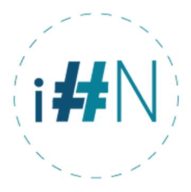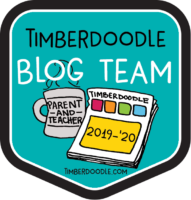There are three main ways you can homeschool for free.
1. Use online free resources.
2. Use a public school funded online program.
3. Use the library.
There are pros and cons to choosing to homeschool without spending money. In general, because information is so readily available these days, what you pay for is the organization of resources.
If you choose to homeschool for free you will need to be prepared to spend some time digging for resources and also organizing and planning how to use those resources.
Use A Public School Option
The exception to this is if you choose to homeschool through the public schools, in that case, there will usually be one or two online options for you to choose from. Everything is organized for you and you follow the schedule given to you by the public school. The pro’s to this option are that it is free and the planning has been done for you. The cons are that you cannot make your own schedule or choose more engaging resources. Here is a list, by state, of those options.
A big perk of paying for curricula is that someone else has spent the time organizing the information for you. A downside is that you will feel obligated to use what you bought, even if it turns out to be a horrible option for your family.
If you have more time than money using free resources can be a great option. If you have less time and more money, I would study curricula and supplies and get some things that will be open and go. But some of those things might still be free resources.
But let’s get real, sometimes you just don’t have the money to buy anything but paper and pencils. If that is the case here is a list of free resource links to get you started. Some of these resources are very well-planned and these can also be a great way to supplement your purchases or keep your budget to a minimum.
Use Free Online Resources
Many people know that Khan Academy has free online math programs, but they continue to expand programs and there is so much more available. There is an elementary grammar program, computer animation, many high school resources and a new app called Khan AcademyKids for young children. One of the great things about Khan Academy is that their resources are organized and easy to use.
Edx has also some courses to prepare high schoolers to take CLEP and AP tests in various subjects, this is a great way to get some low-cost college credits.
There are many programs at http://moocs.com/
Including this list of 4 families friendly science MOOC’s
Ted Talks has created a place to create and share lessons built around free online videos, anyone can create a lesson and the lessons are available for free, there are currently over 300,000 lessons available.
https://ed.ted.com/
TED Lessons
YouTube, of course, is a great source for learning videos and documentaries.
Crash Course is an excellent series and there are many subjects available, including some courses for elementary kids. I do use the courses with my elementary kids, but many are designed for high-school and once in a while a video has slightly more mature content, due to the subject being covered, so you may want to preview a couple before deciding on them for younger kids.
Shmoop also has some great video’s available for free, they are for middle school and up, and although Shmoop is a paid online curricula program, the videos on youtube are like free samples…the kind that keep you going back for more.
minutephysics is another favorite time-tested channel, we started using it several years ago when my second child, 10 at the time, asked me to teach him about quarks. I guess that is what you get for asking your kids what they want to learn.
Vihart and Numberphile are both great math resources, especially if you need to spark your kid’s interest in numbers, but both shows go deep into mathematics and so your already math-lovers will also enjoy the show.
There are many, many more free programs available. If you have a favorite I didn’t list, I would love to hear about it in the comments.
Another free option that is already organized for you is Easy Peasy. Easy Peasy includes all the subjects and breaks work into the day with assignment lists already done for you.
Use The Library
The library is not just for books anymore. Most libraries have Mango, an online language learning platform that you can log into from your home. Video streaming is also becoming common, my local library gives me access to stream music concerts and music & art instructional videos. Overdrive, which is the ebook database available through most libraries is also starting to offer video selections, including The Great Courses, and National Geographic selections. And of course, you can fill your literature needs and find engaging non-fiction for kids at your library also.
Check out my guest post for Take a Look Tuesday where I share some fun resources I am using for history this year.
Take a Look Tuesday-5 Days of Homeschool Encouragement
Christine @ Christine Howard
Christy @ The Simple Homemaker
Dawn @ Schoolin’ Swag
Debra @ Footprints in the Butter
Diana @ Homeschool Review
Felicia @ Homeschool 4 Life
Jacquelin @ A Stable Beginning
Jeniffer @ Thou Shall Not Whine
Jennifer @ A Glimpse of Our Life



2 Responses
i need to check out those TED talks… sound interesting.
Our library has Hoopla which has a lot of the Great Courses - but we can also check out three items a month so it would take us forever to use one of the series. 🙁
But I love that our library is so great at getting things through inter-library loan for us.